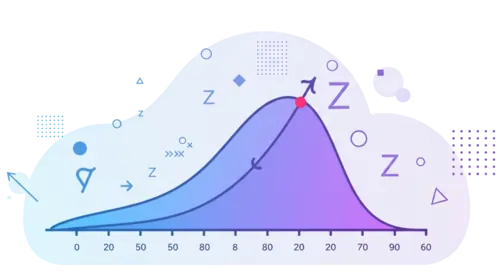How To Find Zeros On A Graphing Calculator TI-84
The TI 84 calculator online and its variations like TI 84 Plus and TI 84 Plus CE are the excellent tool for students who need to calculate data. A popular job in this domain involves calculating the Z-score. Whether preparing for studies such as the SAT, ACT, or AP statistics, or conducting data analysis for research, skills are important for calculating the Z-score on a TI-84.
This article will clarify the concept of how to find zeros on a graphing calculator TI-84 and finding a Z-point will guide you through the calculation process using the TI-84 calculator, and provide a direct example to enhance your understanding.
What is a Z-score?
A Z-score, or standard score, indicates the number of standard deviations by which a specific data point deviates from the mean of a dataset. How to find a zero of a function is important to measure and graph inequalities as well.
The formula looks like this:
z = (X – μ) / σ

Where:
A z-score can be:
For example, if a student scores 85 on a test where the average is 75 and the standard deviation is 5, their z-score would be calculated as follows:
z = (85 – 75) / 5 = 2
This tells us that the student’s score is two standard deviations above the mean.
How To Find Zeros On A Graphing Calculator TI-84
You have two main ways to calculate z-scores on your TI-84:
Method 1: Manually Using the Formula
The calculator will show you x̄ (mean), Sx (sample standard deviation), and σx (population standard deviation).
Use the z-score formula of a zeros calculator:
Z-score formula: (X−μ)/σ.
Although the TI-84 doesn’t provide z-scores directly, you can easily calculate them using this method.
Method 2: By Using Normal Distribution Functions
When you’re diving into probabilities and the classic normal distribution, you can tap into the built-in distribution functions.
For example:
Example: Step-by-Step Z-Score on a TI-84
Imagine we have the exam scores of some students:
Data: 70, 75, 80, 85, 90, 95
Now, let’s find the z-score for a student who scored 90.

Step 1: Input the Data
Hit STAT → 1: Edit and enter the scores into L1.
Step 2: Calculate the Mean and Standard Deviation
Press STAT, then CALC, select 1-Var Stats, input L1, and hit ENTER.
The TI-84 will show:
Step 3: Use the Formula
Assuming this is a population:
This means the student’s score of 90 is 0.88 standard deviations above the average.
Why is the Z-Score Important?
There are various reasons that increase the importance of how to Find zeros on a graphing calculator. Few are mentioned bellow:
Conclusion
How To Find Zeros On A Graphing Calculator TI-84 is pretty straightforward once you get the hang of it. By entering your data, calculating the mean and standard deviation, and applying the formula, you can easily figure out how far a number is from the mean.






